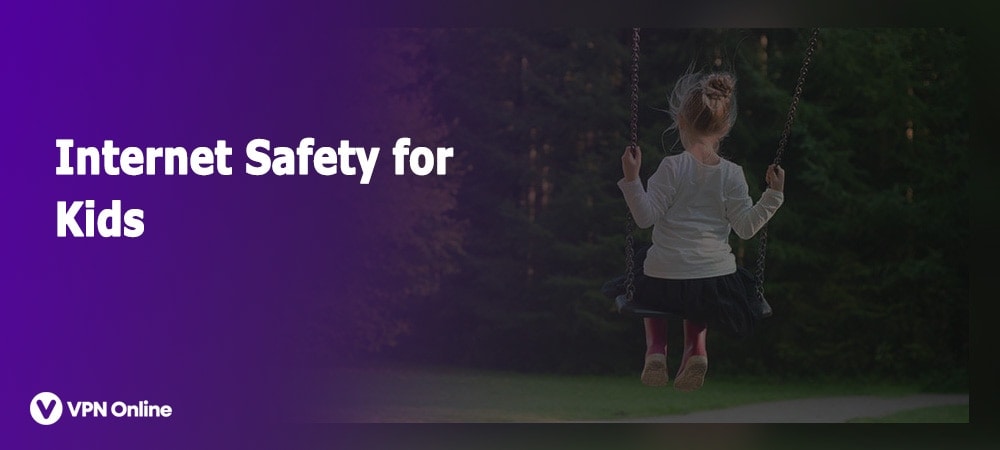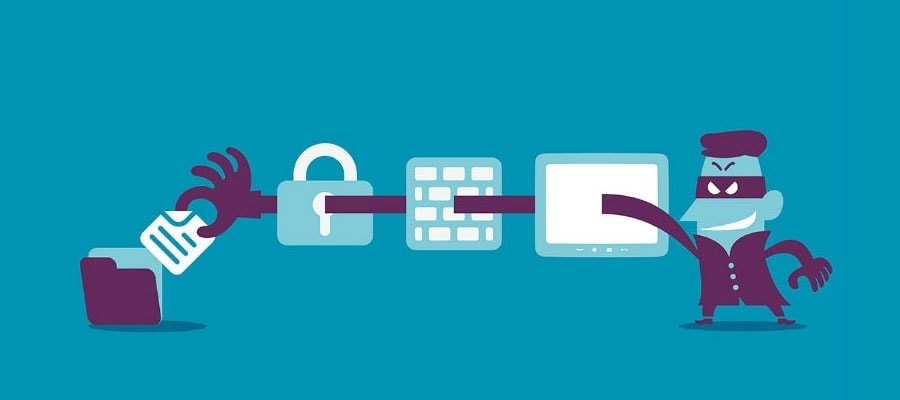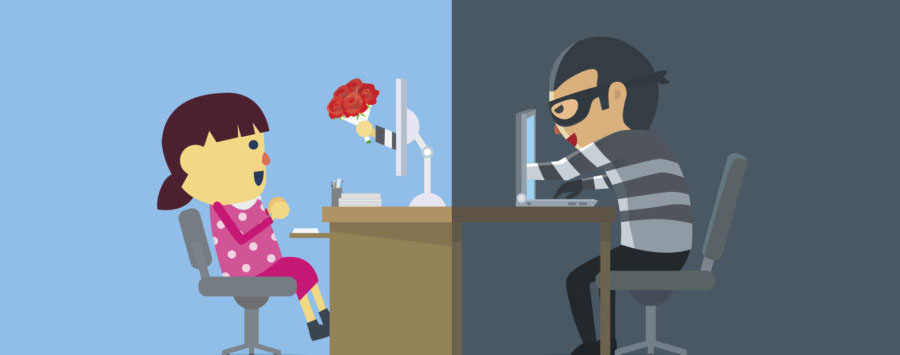
One thing that makes the internet so great is how anyone with a computer, mobile phone, or tablet can access it. It has grown so much over the years and has become one of the most significant technological breakthroughs in history. People nowadays are using the internet to do pretty much everything from talking to their friends to shopping for clothes, and even for paying their bills. Simply put, it is an amazing tool, but it is not without its dangers.
Parents sometimes use their kids as their go-to tech support whenever they encounter things online that aren’t familiar to them. There’s nothing wrong with this since most kids these days are savvy when it comes to using the internet. Some might even feel confident enough to let their children take care of themselves whenever they go online.
This can be a huge mistake because you never know what kind of threats lurk in the vast reaches of cyberspace. Kids, especially teens, might be experts when it comes to technology, but they are mostly clueless when it pertains to evaluating risks online.
We know how impressionable children are and how easy it is for them to get goaded into doing certain things like drinking, bullying, going to late-night parties, and smoking because they see their friends doing the same things as well. So just imagine how easy it can be for our kids to get tricked online.
Any type of damage done by clicking on malware, phishing sites, and even identity theft can cause a lot of trauma to your child. Just like in the real world, parents should also guide their kids and establish boundaries when using the internet. More importantly, parents must also know where these dangers are coming from.
The internet is so vast and diverse, and it continues to grow with each passing day. It provides children with plenty of opportunities to enhance their knowledge and improve their lives.
But there are always potential threats lurking around every corner on the internet, so parents should always be ready to keep their kids safe from these dangers. Note that the purpose of this guide is to educate parents about the risks their children face when using the internet. It is not meant to cause panic or frighten them.
With that said, here are some of the most common threats found online:
Cyberstalking is the act of harassing one or more individuals by using technology, particularly the internet. It’s easy for anyone to create fake profiles online and remain anonymous from their would-be victims. In today’s world, it’s not uncommon for people to use social media to constantly harass and troll others while keeping their real identities hidden. Stalking, whether it’s done online or offline, can emotionally scar children for the rest of their lives.
Fortunately, parents equipped with the right kind of software and knowledge can make it difficult for cybercriminals to continue with their unwanted activities.

This might come as a shock for most parents out there, but did you know that children aged 12 to 17 are the ones who frequent porn sites the most. And that’s not all because according to recent studies, about 90% of children aged eight or older have seen pornographic or offensive content, and 70% of these kids have accidentally encountered it while browsing for something else.

About a third of families use parental control software or filters to help prevent their kids from accessing websites that contain inappropriate content. While this is good, parents can do way more to keep their children safe because software alone is not going to be enough. Smartphones, tablets, laptops and even Smart TV’s are all potential access points to the internet.
Sexual content is not the only thing parents have to warn their kids about. Studies show that 25% of children have also been exposed to hateful or racist messages online. It’s unfortunate that this type of material continues to spread.
Online privacy is an important subject matter in the internet world, and the sad truth is that any device that can connect to the internet has the potential to expose the privacy of the people using them, including your kids. According to Javelin Strategy and Research, more than a million children were victims of identity fraud in 2017 alone. Two-thirds of these children were no older than 7 years of age.

This is an alarming thought because identity thieves now prefer targeting children over adults because this enables cybercriminals to cause more damage by opening new credit lines before their schtick eventually gets exposed. Your children’s social security numbers have no credit reports attached to them, so they make for valuable targets for online thieves.
To prevent identity theft from happening, parents should avoid oversharing their children’s personal information such as their Social Security numbers. Sometimes the perpetrators could be someone that they know. Once their kids’ Social Security numbers have been exploited, there’s not much they can do about it.
Phishing is the use of e-mails with the intent of tricking the user into clicking malicious attachments or links usually with a call to action (“You might be interested in this.”). Young children are impressionable individuals, so they might open an e-mail and click on a link without knowing that it’s dangerous. If the link is sent through SMS, then it’s called “smishing.”

Smishing texts and phishing emails can pop up when least expected, but the crooks behind them usually monitor websites that are popular among children. From here, they will collect information such as emails and the names of friends so they can use them in their scam. Children should be taught not to click any suspicious links or attachments that they get in their emails.
Malware is a virus that gets installed into a user’s computer without their knowledge or permission. They can cause considerable damage and can even steal sensitive information from the infected computer. Kids might sometimes click on ads or links that contain malware without even knowing about it. Cybercriminals trick kids into downloading malware by disguising it as a free-to-play game or app.

Like with most of the threats in this article, parents should educate their kids about the dangers of malware will help them become more careful in the future. Installing antivirus software can also help malware from getting installed and keep your computer safe from potential cyber security attacks.
Sharing files such as videos and images over the internet is common, especially in social media sites like Twitter and Facebook. On paper, there’s nothing suspicious about sharing files with others online, but there is a dark side to this. Teens, especially young girls, love sharing photos of themselves online and while there’s nothing wrong with sharing a selfie every now and then, it’s a different story when the photo being shared involves sex and blackmail.

This is called sextortion, and it is defined as the act of using sexually explicit materials (videos or photos) to extort money from the victim so that the materials won’t get shared online. Remember that with the way the internet is right now, it’s easy for any photo or video to become viral.
It might seem like a rare case, but it’s been reported that 10% of teenagers share nude photos and videos of themselves online. That is a lot of content and a lot of sextortion cases. The definition of sextortion is already shocking enough, but what’s even more disturbing is the fact that some cases involve suspects who personally know the victims, and the threats usually go beyond the internet.
Let your kids know they need to be careful when sharing stuff online because anything they put on the internet can spread quickly. Teens crave for attention and in a world where “likes” and “reacts” have become the norm, telling them to stop sharing their photos goes against what they believe in.
Now that we have identified and assessed some of the common threats that kids are likely to encounter online let us look at what parents can do to protect their kids from these dangers. Here are 25 tips every parent should know when it comes to securing their children online:
Computer viruses are always going to be a threat no matter what, which is why installing reliable antivirus software in every running computer in your home is essential. There are currently 100,000 known computer viruses, and this number continues to grow with each passing year. They can invade computers in several different ways, so parents who share their laptops and desktops with their kids should have a trusted antivirus in place.
Young kids love to explore so don’t be surprised if you see them discovering new websites on the internet where they might accidentally download something. Having a strong antivirus in place will ensure that every downloaded file gets scanned for any signs of potential threats. It can even block access to websites that might contain malware and trojan horses.
When installing an antivirus program in your computer, make sure to set it to automatically scan the hard drive anytime a new file gets added. The application should also be set to update automatically so that its virus database remains up to date, thereby providing you and your family with the latest protection.
Put a time limit to the number of hours that a child can spend online. As a parent, this is one of the smartest things you can do to make their browsing experience safe. Having this limit in place will also remind them that the internet should be used as a tool and not something for nonstop entertainment.
This isn’t an easy thing to do when laptops, tablets, and smartphones can all be accessed easily by kids at home. One rule all parents should always reinforce is to not have any smartphones or tablets at the dinner table. You can also choose to have only one computer at home that everyone should take turns using.
Try placing specific areas at home where computers and smartphones will not have access to Wi-Fi. Some routers allow this sort of configuration, and it can give parents more leeway to monitor their kids’ browsing activities.
Google is the most widely used search engine because it can easily give users access to plenty of information online. However, it may also display results that house potential threats as well. Go for a safer alternative like the DuckDuckGo search engine because it has an emphasis on protecting a user’s privacy.
There are also other anonymous search engines that are geared towards children and filter out results that might not be appropriate for their age.
Changing the default search engine of the browser might still not be enough to monitor and control your kids’ online activities. Giving them access to a browser will let them find a way to detect dangerous and inappropriate content. Popular browsers like Chrome, Safari, and Mozilla Firefox have limited parental control settings, so it might be better to invest in a separate web filtering app.
There is a range of web filtering applications available for both Windows and Mac computers. These programs come equipped with tools that let users configure which URLs are off-limits when browsing. They can also be set to only grant kids access to sites with HTTP as this will ensure that the websites that they visit are encrypted and secure.
Kids these days love to tinker with their smartphones and tablets when browsing the internet. Parents don’t often get to see what their kids are doing on their cell phones, but they can still place some restrictions on their browsing activities. Both Android and Apple iOS devices have parental control apps to help keep kids from accessing inappropriate websites and content.
The goal here is to keep kids away from websites with inappropriate content while keeping personal information safe. Android users can download the Google Family Link app and create kid-friendly accounts on Google that will be linked to your primary account. iOS users can tinker with the parental control features via the “Restrictions” menu of their settings app.
A passcode will be required to access these options, and once the parents gain access to them, they can place restrictions on the apps that they don’t want their children to use. They can also block explicit in the Podcasts and Music app.
Social networking has come a long way from the days of Myspace and mIRC. Nowadays, we have Facebook and Twitter as the two largest social media platforms in the world, while apps like Snapchat and Instagram also remain vastly popular. Billions of people use these platforms each day, and many of them are kids.
Social media can be fun, but it can also be dangerous to a certain degree. As a rule of thumb, parents should not allow children younger than 13 to have any social media accounts. And depending on the maturity level of their children, parents may also want to add a few years to the age limit.
Parents are also encouraged to limit their interactions with others on social media. Tell them to talk to you or another adult if they get approached by strangers online. Make sure to also keep a close eye on the photos and videos that they share through their social media accounts.
It’s not only adults who needed to be educated on the importance of having strong passwords for online accounts. Tell your children to avoid using the same password for each email or website that they are registered to. Strong passwords should have a combination of lower and uppercase letters, alphanumerical characters. The passwords should be difficult to guess, and their backup security questions must not have obvious answers.
Make it a rule to have each family member use a different password every month to prevent hackers from compromising you and your children’s accounts.
Children who have their own tablets, laptops or smartphones are sure to download different apps on their devices. Some apps are free but have certain perks that can only be accessed by purchasing them with real money. This is risky especially for families that share a single payment account for all purchases.
iOS and Android devices require a special passcode or fingerprint entry from an adult before allowing any transactions to push through via a saved payment method. But still, parents should monitor any purchases their children make online. Stress to them to always come to you first and ask permission to use your credit card before making a purchase.
And remember only to let them purchase from online stores that can be trusted to avoid having important credit information from being stolen.
There’s no denying that the internet is now a big part of children’s lives. They use it for just about everything from talking to their friends to researching for school assignments. Some of them even think it’s safe to share their personal info online. This is a bad idea because the recent Facebook privacy issues concerns are already an indication of how personal information can get leaked online at any given time.
Remind your kids of the threats that exist online and how they can become victims at any moment if they’re not careful. More importantly, tell them not to share any of their personal data such as their cell phone numbers, address, or name online without consulting their parents beforehand.
No, we’re not talking about the canned meat product, but rather the annoying or inappropriate messages being sent through text or emails to many recipients. Educate them about spam and why they should never respond to these messages because of the potential threats or dangers behind them. Make it a rule for them to tell an adult if they receive a suspicious message in their inbox.
Gmail has an option that allows parents to create a kid-friendly inbox that’s connected to their primary inbox. Once the child reaches the age of 13, parents can then choose to migrate their child’s linked account to become an independent one.
Kids love to play video games, and the internet is full of fun games for them to choose from. Online gaming is now the preferred method of playing for most kids these days. Whether the family is more into PC gaming or console gaming, parents have the option to control the kind of content they want their kids to see.
The PlayStation 4 has a Master account for parents to use and a sub account that can be reserved for children. The sub account can be setup to restrict access to certain rating levels or games. The Xbox One also has a similar feature, although the console allows child accounts and adult accounts to remain separate.
For PC gamers, the Steam platform has a “Family Mode” that lets adults block certain games from their children’s accounts.
If you check apps like Instagram and Snapchat, you may notice how many young teens love to post selfies and videos and share them with the rest of the world. This is okay as long as the content that the kids are sharing is appropriate.
Make it clear to the children about what kind of content is considered appropriate and what is not. Also, make sure to warn them about the dangers of their photos and videos leaking online even if they are stored away in their device’s hard drive. Lastly, remind them only to share photos and videos with contacts they know in real life and can be trusted.
Cyberbullying is one of the biggest dangers of the internet, and it affects several children worldwide. Most of the kids being targeted by cyberbullies are those who are gay, overweight, disabled, and members of ethnic minority groups.
The victims of this act often have trouble sleeping, experience headaches, lose their appetites and suffer from psychological effects such as anxiety, depression, and alcohol use. Children who become victims of bullying online are sometimes afraid to open up about their experiences because they are afraid no one might listen to them.
As a parent, assure your child that they can go to you for help, and see if there are any available resources for this problem at your local schools.
Most bullies tend to remain anonymous, but there are some instances wherein they might expose their real identities. Save any evidence of cyberbullying that you can find and report them to a platform that deals with this type of concern. You should then report the incident your child’s school, the local authorities, and your phone and internet provider. Lastly, block the bully from your child’s mobile phone and social media accounts.
YouTube has replaced television for most kids these days. It has billions of videos in it, but not all of them are safe for kids. Don’t worry though because YouTube has a feature that lets parents block out certain videos from appearing whenever their children are using the website.
On the website, scroll down to the bottom and look for an option that says, “Restricted Mode.” Activating this option will hide any videos that may contain inappropriate or suggestive content as marked by users. For the mobile app, tap on the three little dots on the upper right corner of the screen, choose “Settings,” then “General,” and scroll down until you see the “Restricted Mode” option.
There is nothing wrong with kids using the internet for educational and entertainment purposes, but parents should still encourage them to explore the real world outside of their computer and phone screens. It’s best to start this while the kids are still young using the computer together as a tool for learning.
Schedule a time when you and your child can use the computer together to see what he/she wants to explore next on the internet. Once rules have established about how to use the internet at home, explain to them why these rules are in place. Remember not to make any promises to them about how these rules are going to go away when they grow older. Instead, establish some goals of how they can prove themselves mature enough to have more freedom online.
The internet provides everyone with anonymity, and this is something that parents point out to their kids. Kids are likely to make friends online, especially in social networking sites and online gaming communities. Some of these friends may even invite your kids to meetup in person, and this is where parents should step in and say “no.”
The people they meet online might not be who they are in real life. Keep track of the friends your children make online and make sure to report any suspicious activities to the local authorities.
Teens love hanging out with their friends at the mall and in coffeeshops all while using free public Wi-Fi. It’s great when we have public Wi-Fi for free, but it can also be dangerous. Public networks usually don’t have good protection and kids who connect to these networks put themselves at risk of getting hacked.
Warning your kids might not be enough, but you can install a trusted VPN service like NordVPN on their devices. The best VPN services can keep your children’s IP addresses anonymous even when accessing public networks.
Teens use email, social media, and messaging apps very frequently, and they all allow users to make changes to their privacy settings at any time. If it’s your child’s first time to create a profile with any of these apps, sit down with him/her and explain why you need to adjust the privacy settings on his/her profile.
Kids need to realize that almost everything done online nowadays is no longer private, so they need to take extra steps to protect their privacy. If possible, have them read the privacy guide of their respective social media and messaging apps so they can gain a better understanding of the importance of maintaining their privacy.
Inappropriate photos and videos aren’t the only threats that endanger youngsters online. Just like in the real world, privacy is also important online. Kids might not understand this yet, so it’s up to the parents to explain to them how giving away bits of personal info online can be dangerous.
Just because the child is doing it behind a computer screen doesn’t mean cybercriminals won’t find a way to victimize them. For instance, sharing videos or photos on social media of the family going on vacation is already a sign that no one is at home, and crooks can use this to their advantage. Share with them some vital tips for private browsing so they will be more cautious in the future.
Like the old saying goes” Sticks and stones may break my bones, but words will never hurt me.” Technically, this is true because words don’t cause physical harm, but that doesn’t mean they don’t have the power to do damage in a different way. This is especially true for teens who are engaged in “sexting” which is the sending or receiving of sexually explicit messages.
Today’s technology makes it easier for sexual predators to take screenshots of sexual content sent to them by kids. Parents should teach their children the dangers of engaging in such activities. Tell them that it’s never okay to send or receive messages and photos containing sexually explicit content.
It’s a threat that is constantly growing, and it is up to the parents to make sure it doesn’t get worse.
Online chat is nothing new because it’s been around for more than 20 years. Many websites have their own chatrooms where users can converse with one another about anything under the sun. Parents should be mindful of the kinds of chatrooms their kids engage in because entering a chatroom filled with mostly adults will not grant them a PG-friendly environment.
There are plenty of websites that have kid-friendly chatrooms where kids can interact with their fellow kids. Check the sites first to see if there’s an admin who monitors these chatrooms to keep the kids safe from would-be predators.
More importantly, teach kids not to share any information about their real identities online even if it is in a kid-friendly chatroom.
Online polls and surveys are usually fun and engaging platforms, and for the most part, they’re all harmless. However, a lot of these online polls and surveys ask for personal information, and kids who share this information may find their inboxes flooded with spam. This will leave them vulnerable to identity theft.Online polls and surveys are usually fun and engaging platforms, and for the most part, they’re all harmless. However, a lot of these online polls and surveys ask for personal information, and kids who share this information may find their inboxes flooded with spam. This will leave them vulnerable to identity theft.
Most adults have alternate email accounts that they use whenever they register for something online. If necessary, have the child use this account if he/she has a legit reason to answer a survey or questionnaires that require an email address.
Teens might not like the thought of mom and dad following them on social media, but parents need to remind them that they’re only doing it to keep them safe and not to stalk them. You can also ask another adult that you know to follow your children on any social media platforms that they’re on.
Parents who see their children posting something they don’t like should not make snide comments right away. Instead, have a talk with the child and explain to them why you’re not happy with what he/she just posted. Embarrassing your kids in front of their friends online won’t do any good, and they may even end up blocking you from their accounts.
Parents are a child’s first role models, so they need to set examples for them to follow including on the internet. For instance, don’t let your child see you browsing inappropriate content while using a Canada VPN service to hide your activities after you warn them about not doing the same thing.
Even if it is on the internet, show your children why these online rules have been set in place at home. Reason out to them if needed but avoid being too stern or harsh unless the situation calls for it.
Children today are always going to access the internet for whatever reason, so make sure to let them know how important it is to keep safe while browsing. It might take a while, but a few constant reminders and having some ground rules on internet usage at home will eventually make them come around and realize why parents are doing what they have to do to keep them safe.
